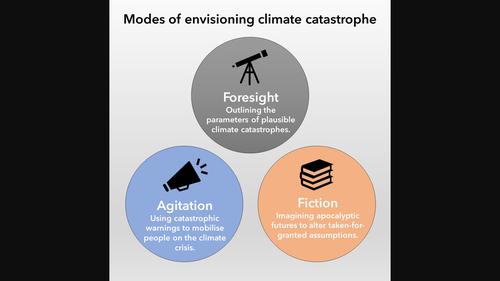Climate catastrophe: The value of envisioning the worst-case scenarios of climate change
引用次数: 0
Abstract
Many now argue that we should think about the previously unthinkable risks of climate change, including societal collapses and human extinction. Calamitous images of the future are not pathological or counterproductive: it is both necessary and valuable to imagine the worst-case scenarios of climate change. Critics of climate catastrophe often group together all visions of disastrous futures under labels like doomism or pessimism. This is unhelpful and greater nuance is required. We need to distinguish between climate doomists (who see catastrophe as imminent and unavoidable) and climate risk realists (who see catastrophe as one potential future that should be avoided). We also need to split apart the different ways of envisioning climate catastrophe to understand their distinct strengths and weaknesses. We outline and compare three alternative modes of viewing the worst-case scenarios of climate change: foresight, agitation, and fiction. The first centers on modeling catastrophic climate scenarios, the second on the use of images of climate catastrophe for political action, and the third on fictional visions of future climate disasters. These different approaches are complementary and should be better integrated to create more comprehensive models of the future. All of them would benefit from viewing the future as uncertain, reflecting on the social position of the author, and guarding against the authoritarian “stomp reflex” that can be induced by discussions of crisis and emergency.

气候灾难:设想气候变化最坏情况的价值
许多人现在认为,我们应该考虑以前无法想象的气候变化风险,包括社会崩溃和人类灭绝。对未来的灾难性想象并非病态或适得其反:想象气候变化的最坏情况既必要又有价值。气候灾难的批评者经常把所有对灾难性未来的看法归为末日主义或悲观主义。这是没有帮助的,需要更细微的差别。我们需要区分气候末日论者(他们认为灾难迫在眉睫且不可避免)和气候风险现实主义者(他们认为灾难是一种应该避免的潜在未来)。我们还需要区分不同的设想气候灾难的方式,了解它们各自的优势和劣势。我们概述并比较了三种看待气候变化最坏情况的不同模式:预见、激动和虚构。第一个是对灾难性气候情景的建模,第二个是利用气候灾难的图像进行政治行动,第三个是对未来气候灾难的虚构想象。这些不同的方法是相辅相成的,应该更好地结合起来,以创造更全面的未来模式。所有人都将受益于将未来视为不确定的,反思作者的社会地位,并防止讨论危机和紧急情况可能引起的专制的“跺脚反射”。
本文章由计算机程序翻译,如有差异,请以英文原文为准。
求助全文
约1分钟内获得全文
求助全文

 求助内容:
求助内容: 应助结果提醒方式:
应助结果提醒方式:


